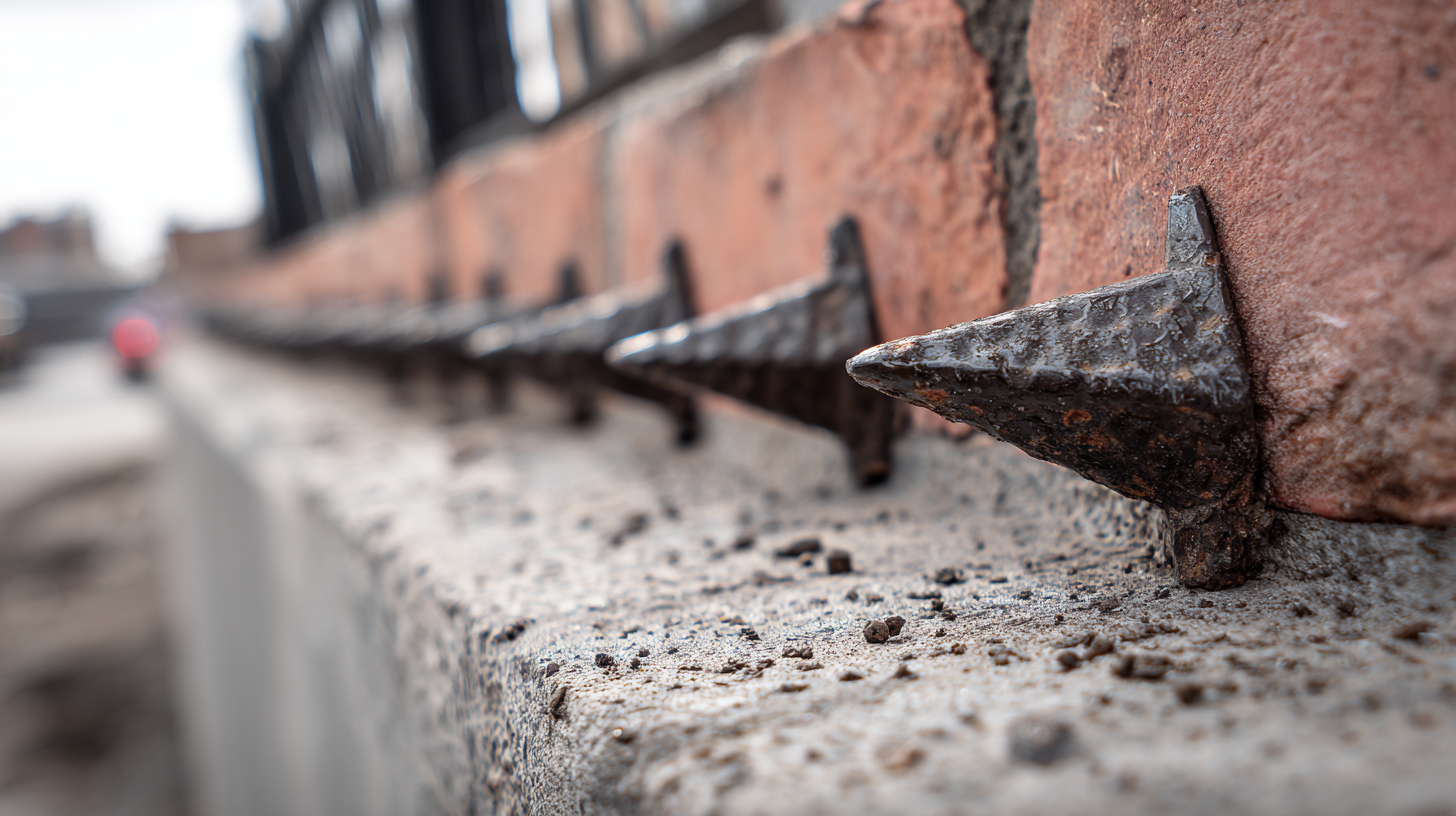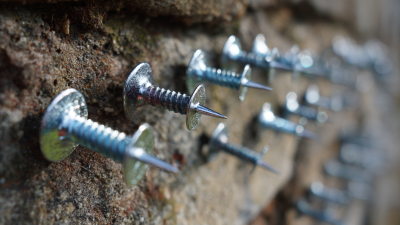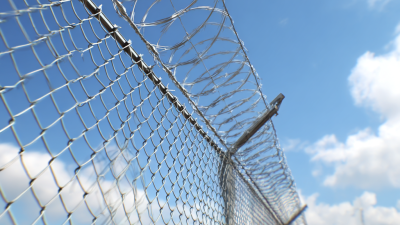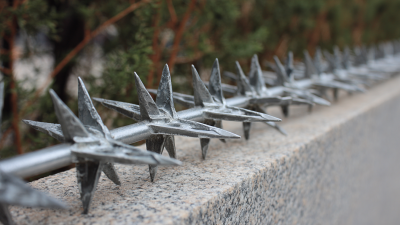How to Effectively Install 316 Wall Spikes for Maximum Security
In today's world, ensuring security around residential and commercial properties has become more critical than ever. With recent statistics indicating a 20% rise in burglary rates over the last decade, effective security measures are paramount. Among the various options available to enhance perimeter security, 316 Wall Spikes have gained popularity due to their durability and effectiveness. Composed of high-grade stainless steel, these spikes offer not only a formidable deterrent to potential intruders but also withstand harsh environmental conditions, thereby maintaining their efficacy over time. Industry studies reveal that properties equipped with such defense mechanisms experience a significant reduction in unauthorized access incidents. In this blog, we will explore the best practices for installing 316 Wall Spikes to ensure maximum protection for your premises.
Understanding the Importance of 316 Stainless Steel in Wall Spike Installation
When it comes to wall spike installation, choosing the right materials is critical for ensuring maximum security. 316 stainless steel is an excellent choice for this purpose, given its superior corrosion resistance and durability, especially in harsh environments. This is particularly important in areas like the salty coastal regions near the Dead Sea, where traditional materials may quickly degrade. Utilizing 316 stainless steel not only enhances the longevity of wall spikes but also ensures that they maintain their effectiveness in deterring unwanted trespassers.
**Tips for Installation:**
1. **Surface Preparation:** Before installing the wall spikes, ensure the mounting surface is clean and free from debris. This promotes better adhesion and stability.
2. **Use Quality Anchors:** Select high-quality anchors specifically designed for 316 stainless steel spikes to ensure a secure fit, preventing any potential wiggle or loosening over time.
3. **Regular Inspections:** Periodically check the condition of your wall spikes to ensure they are intact and functioning. This is especially important in locations prone to extreme weather conditions.
By focusing on quality materials like 316 stainless steel and following these installation tips, you can enhance your property's security significantly.
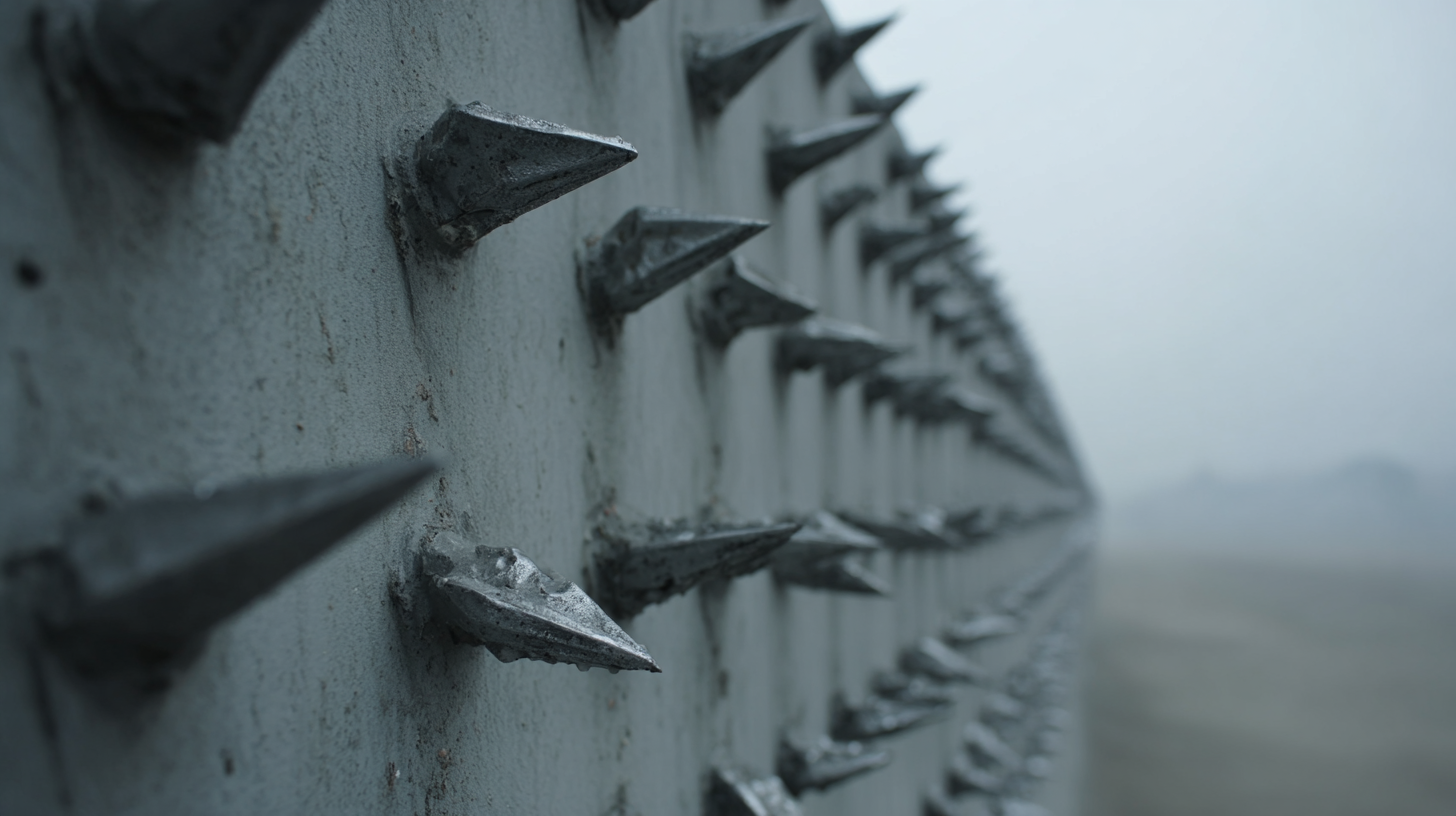
Key Considerations for Selecting the Right Location for 316 Wall Spikes
When it comes to installing 316 wall spikes, choosing the right location is crucial for maximizing security. The first step is to assess the property boundaries and identify vulnerable entry points. Look for areas that are easily accessible, such as lower walls or fences that could serve as footholds for potential intruders. Placing the spikes in these locations will create a formidable barrier that discourages unauthorized access and enhances the overall security of your premises.
Another key consideration is the visibility of the spikes. It’s important to install them in a way that they are easily seen from the outside, as the sight of these deterrents can often prevent criminal activity before it even occurs. High-traffic areas should be prioritized, ensuring that anyone approaching the property is well aware of the protective measures in place. Additionally, consider the angle and spacing of the spikes to optimize their effectiveness, ensuring they are not only a physical barrier but also a psychological one that deters potential trespassers from attempting to breach your property.
Step-by-Step Guide to Effectively Installing 316 Wall Spikes
Installing 316 wall spikes can significantly enhance the security of your property. To start, you’ll need to gather essential tools such as a drill, screws, a level, and protective gear. Begin by measuring and marking the installation area on your wall to ensure a straight and uniform application. Using a level will help you maintain an even line, preventing any misalignment that could compromise both aesthetics and functionality.
Once your markings are complete, drill pilot holes into the wall to facilitate easier installation. Make sure to use appropriate anchors if you're installing on a material like brick or concrete to ensure durability. After securing the spikes, double-check that each one is tightly fastened and positioned perfectly to deter intruders effectively. By following these steps, you can successfully install 316 wall spikes, creating a formidable barrier that protects your property while maintaining a professional appearance.
How to Effectively Install 316 Wall Spikes for Maximum Security
| Step |
Description |
Tools Needed |
Estimated Time |
| 1 |
Measure the wall length and determine the number of spikes needed. |
Tape measure |
15 minutes |
| 2 |
Clean the surface where the spikes will be installed. |
Broom, cleaning solution |
10 minutes |
| 3 |
Layout the spikes to check alignment and spacing. |
Chalk line, spikes |
20 minutes |
| 4 |
Securely attach the spikes using appropriate fasteners. |
Drill, screws |
30 minutes |
| 5 |
Check for stability and ensure all spikes are secured. |
None |
15 minutes |
Maintaining Your 316 Wall Spikes for Long-Term Security Efficacy
Maintaining your 316 wall spikes is crucial for ensuring long-term security efficacy and durability. According to a report published by the Security Industry Association, properly maintained security installations can reduce crime rates by up to 40%.
Wall spikes, made from high-grade 316 stainless steel, are particularly resistant to corrosion, making them an excellent choice for outdoor security. However, regular inspections and maintenance are vital; experts recommend checking for any signs of wear or damage at least twice a year to ensure they perform optimally.
Failure to maintain your wall spikes can compromise their effectiveness. A study conducted by the British Security Industry Association found that around 30% of security systems fail due to lack of maintenance. Simple tasks, such as cleaning the spikes to remove debris and checking for sharpness, can significantly enhance their deterrent effect. Additionally, addressing any rust spots promptly not only extends the lifespan of the spikes but also ensures they retain their intimidating appearance, which is essential for deterring potential intruders.
Regular maintenance of your 316 wall spikes guarantees that you maintain a robust security posture over time.
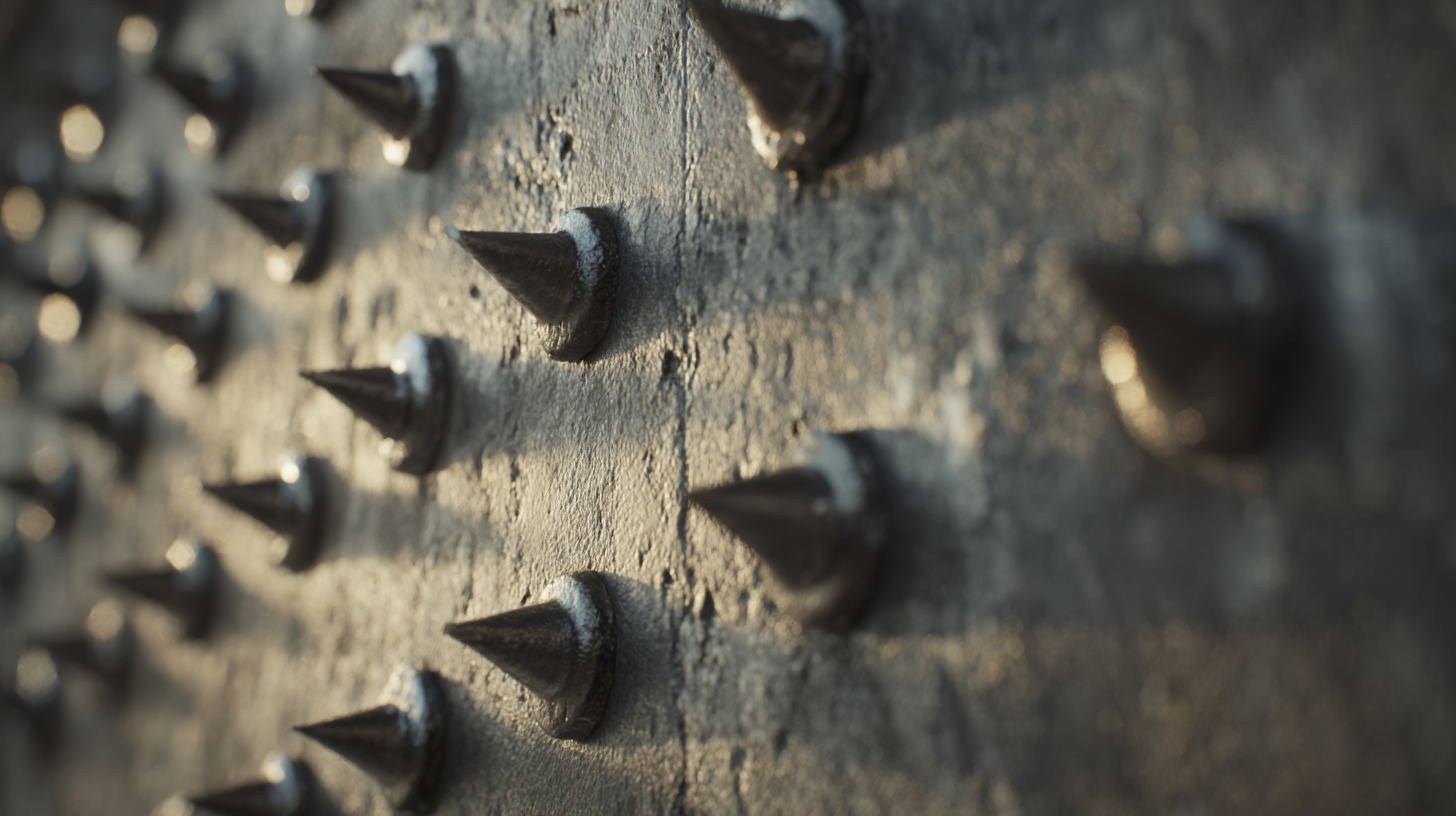
Evaluating the Effectiveness of 316 Wall Spikes with Industry Metrics and Case Studies
When evaluating the effectiveness of 316 wall spikes, it is crucial to rely on industry metrics that accurately reflect their performance in real-world applications. 316 stainless steel wall spikes are designed not only for durability but also for providing an effective deterrent against unauthorized access. Metrics such as penetration resistance, visibility, and corrosion resistance serve as key indicators of their efficacy. Case studies from various facilities reveal that installations with these spikes have significantly reduced intrusion attempts, demonstrating their reliability as a security measure.
Additionally, case studies often highlight the adaptability of 316 wall spikes in varying environments, showcasing their effectiveness in urban settings where aesthetics must align with security needs. For instance, installations in commercial properties revealed a marked decrease in vandalism and theft following the addition of these spikes. By analyzing the experiences of these facilities, we can better understand how strategic placement and the integration of 316 wall spikes into existing security systems can maximize their protective benefits. As security challenges evolve, leveraging these real-world examples can guide future implementations for optimal outcomes.
Effectiveness of 316 Wall Spikes in Security Applications
This chart illustrates the effectiveness of 316 wall spikes in terms of different security metrics. The dataset reflects the potential deterrent effects while comparing installations with and without spikes.

Home
About Us
Products
Customize
Application
Support
Blog
Contact Us
